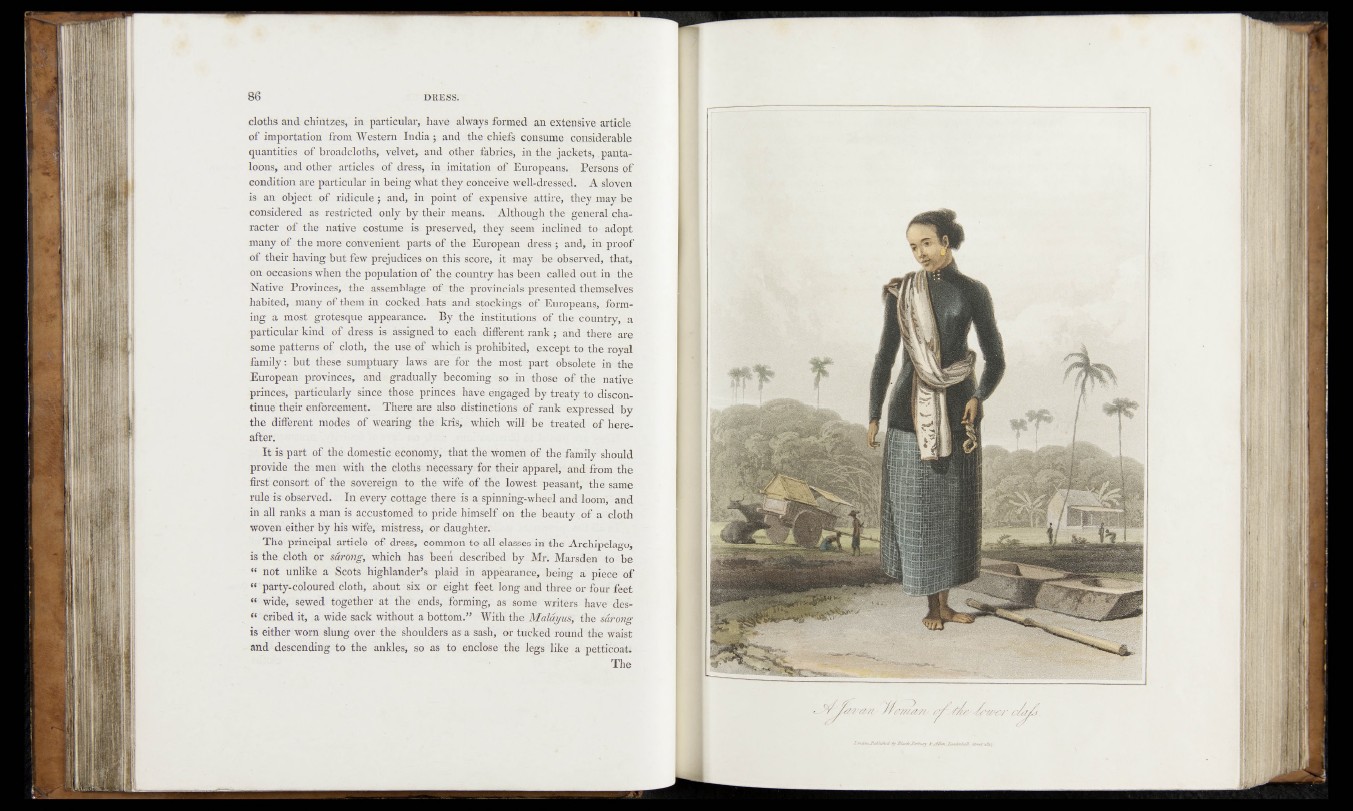
cloths and chintzes, in particular, have always formed an extensive article
©f importation from Western India; and the chiefs r.nnsumft mmifWaM*.
quantities of broadcloths, velvet, and other fabrics, in the;-jackets, .pantaloons,
and. other articles of dress,, in imitation of Europeans,. Persons of
condition, are particular in being what they .conceive well-dressed-. A sloven
is an object . of ridicule $ and, in point of expensive attire, they may be
considered as restricted: only by: their means. Although the general character
of the native costume is: preserved, .they seem inclined to adopt
many of. the more convenient parts of-the European dress j and, in proof
of their having but few prejudices on this score,i it >may he- observed, that,
on occasions when the population of the country has been called out in the
Native Provinces, the assemblage of rthe .provincials .pfesfiftted themselves
habited, many of them in. cocked-hats and. stockings- of "Europeans, forming
a most grotesque appearance. By _the institutions, of the. country^ a
particular kind of dress is assigned to .each different rank j and there are
some patterns of doth, therusé of which is prohibited, except to the j-oyal
family: but these sumptuary laws are for the most part obsolete in -the
European provinces, and gradually becoming-so in those .of the native
princes, particularly since those princes, have engaged by treaty to discontinue
their- enforcement. There are also distinctions of rank expressed by
the different modes of wearing the kris, which will be treated of hereafter.
I t is part of' thé- domestic economy, that the women of the family should
provide the men with the cloths neeessary.for their apparel, and from the
first consort .of'the sovereign to the wife of the lowest peasant, the same
rule is- observed*. Ini every cottage there is a spinning-wheel and loo'mi and
in all ranks a man is accustomed t© .pride himself on the. ibeauty\.of a- cloth
woven-either by his wife, mistress, or daughter. .
The principal article of dress, common to all classes in the Archipelago^
is the. cloth or s&rong, which has been described by. Mr; Marsdèn to bê
“ not unlike a Scots highlander’s plaid.in appearance,• being a piece of
“ partys-colouredicloth, .about six or eight feet long and three Or four feet
“ wide, sewed together at the: ends, forming, as some Writers have des-
#* cribed ;a wide sack without a bottom.” With’t h e thè sarong
is either worn slung over the shoulders as a sash, of tucked round the waist
and descending to the ankles, so as to enclose the legs like a petticoat;
The